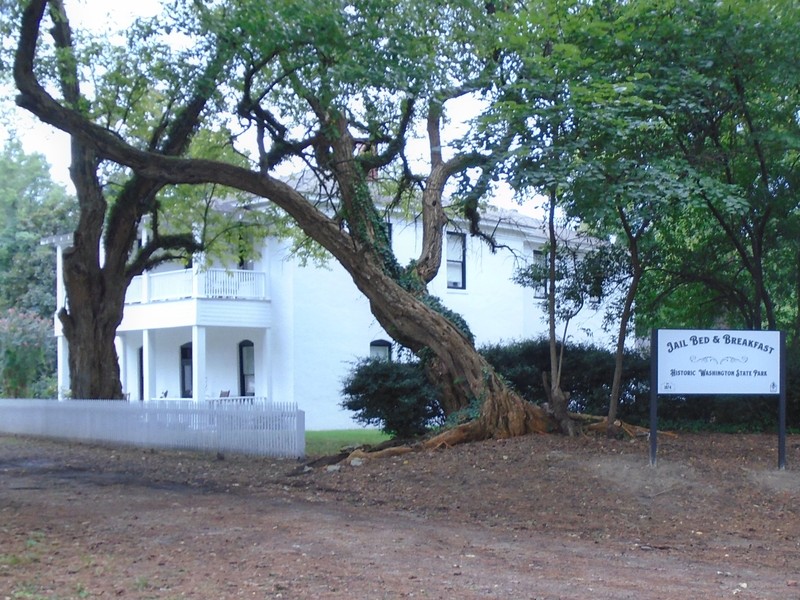Bois D’Arc Tree
Introduction
Text-to-speech Audio
The bois d’arc is native to southwest Arkansas and was a new species when first cataloged by Peter Custis during the Red River Expedition of 1806. The tree is also known as Osage orange or horse apple. The wood is extremely hard, flexible, and resistant to decay. One hundred-year-old fence posts can still be found in excellent condition. These qualities made bois d’arc (French for “bow wood”) a superior trade item as bow wood for the Caddo and Osage.
Images
Bois d'Arc Tree by the Pioneer Cemetery sign
.jpg)
Illustration of Bois d'Arc trees, fruit, and leaves by local artist Ann Bittick

A larger, older specimen of Bois d'Arc sits in front of the Washington Jail Bed & Breakfast

Backstory and Context
Text-to-speech Audio
The bois d’arc tree (often anglicized as “bodark”) is native to the region around the Red River Of The South. Its other names (osage orange, hedge apple, horse apple) come from its large, round fruit. These “multiple fruit” (similar to figs or pineapples) can be the size of a large orange, and have a bumpy yellow-green skin and a taste similar to cucumbers. The hedge apple name also comes from the fact bois d’arc trees often grow like large hedges, with short but wide twisting trunks and outstretched limbs. In Hempstead County, the township bordering Red River is named Bois d'Arc Township.
Sources
Branches In Time: Notable and Historic Trees of Old Washington Historic State Park. Little Rock, AR. Arkansas State Parks.
Historic Washington State Park
Historic Washington State Park
Historic Washington State Park
